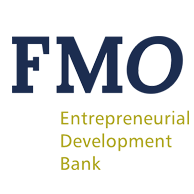


At FMO, we believe that the financial inclusion of young people creates an opportunity for positive impact for economic growth, political stability, innovation, and social and sustainable development.
At FMO, we strongly believe that financial inclusion supports inclusive development and is a key enabler for many of the SDGs. Notwithstanding progress made to date in advancing financial inclusion, almost half of the world’s young adults are still financially excluded.
The Y Initiative’s Compendium of Global Good Practices on Youth Finance is a study commissioned by FMO to support the identification of innovative, cost-effective, and replicable initiatives working to increase low-cost access of financial services for young people globally.
That is why we've comissioned the Y-Initiative Compendium, which is expected to enable Financial Institutions to design and deliver appropriate financial products and services that benefit young people’s livelihoods and promote their financial inclusion.
The amount of young people in middle- and low-income countries totals 1.55 billion, which accounts for 39 percent of working age adults (UNDESA 2021). Nearly 90 percent of youth worldwide live in developing countries, with nearly 1 billion in Asia and Africa (UN, 2020). In regions such as Africa, there's a significantly higher population of youtng adults, with 60% of the continent's population of 1.1 billion under the age of 24 (UNDESA, 2019). These figures underline the significance of the youth demographic as a critical market segment.
Additionally, youth between the ages of 18 to 34 are also more likely to be entrepreneurs. The rate of entrepreneurial activity among youth exceeds that of adults ages 35 to 64 in 36 of the 47 economies surveyed by the Global Entrepreneurship Monitor in 2020 (GEM, 2021).
While youth segments are often lumped together, they are not a homogenous group – there are individual and varying market segments that must be considered as Financial Service Providers (FSPs) develop appropriate financial products. These segments can be defined by gender, education, and geographic locale.
FMO’s Y-Initiative has identified several unique opportunities for FSPs to serve the youth market. These are explored further in the compendium and include the following:
Download the full report and other resources via the sidebar, or contact your relationship manager for more information.